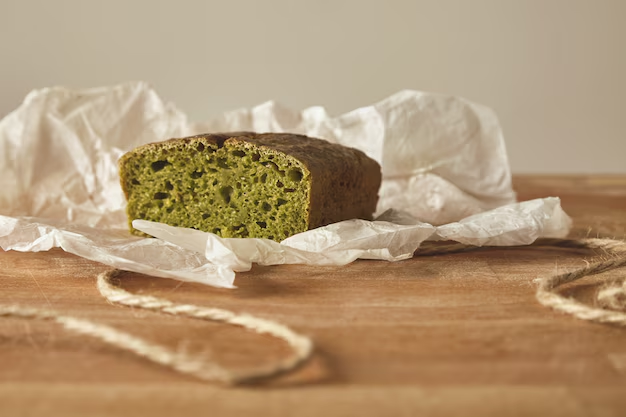How to Maximize Your Wasabi Paste Freshness in the Fridge
Wasabi paste, the piquant green condiment often found adding a kick to sushi dishes, brings a unique flavor profile to various culinary creations. But once you've opened a tube, the pressing question becomes: How long can it last in the refrigerator before it's time to toss it? This article delves into the lifespan of wasabi paste, offering storage tips, signs of spoilage, and related insights about wasabi products.
🥢 What Is Wasabi Paste?
Understanding the Origin
Before exploring storage nuances, it's helpful to understand what wasabi paste is. Traditionally made from the rhizome of the Japanese wasabi plant, this paste unleashes a fiery sensation. However, due to the rare and expensive nature of real wasabi, many commercially available wasabi pastes contain horseradish, mustard, and green coloring. These substitutes aim to mimic the taste and pungency of authentic wasabi. Understanding the type of wasabi paste you have can help in managing its storage and longevity.
Shelf Life of Wasabi Paste
The shelf life of wasabi paste hinges on the ingredients used and storage conditions. Unopened, commercially packaged wasabi paste can last for years when stored in a cool, dark place. But once the seal is broken, its shelf life is significantly reduced. Let's explore the factors influencing its longevity in the fridge.
📦 How Long Does Wasabi Paste Last in the Fridge?
Key Factors Affecting Freshness
Once opened, wasabi paste usually lasts about one to two months in the refrigerator. Several factors influence this time frame:
- Ingredients: Pure wasabi root paste might spoil quicker than its commercial counterpart due to the absence of preservatives.
- Packaging: Tubes prevent airflow better than jars, extending freshness.
- Storage Conditions: Consistent refrigeration and airtight sealing help maintain optimal quality.
Recommendations for Refrigeration
For maximum freshness, follow these storage guidelines:
- Seal tightly: Ensure the container is airtight after each use to prevent exposure to air.
- Position correctly: Store the paste at the back of the fridge where temperatures are more stable.
- Label with date: Mark the opening date for easy tracking.
🛑 Signs of Spoilage
No one wants to risk consuming spoiled wasabi paste, so look out for these signs:
- Color changes: Fading or browning indicates oxidation.
- Texture changes: Separation or clumping can suggest deterioration.
- Off odor: A sour or rancid smell means it's time to throw it away.
🌿 Understanding Real vs. Imitation Wasabi
Real Wasabi
Authentic wasabi, grated fresh from the wasabi plant, offers a smoother and more nuanced flavor profile than store-bought paste. However, it will last only a few days in the refrigerator after preparation. The plant's unique compounds degrade quickly, losing both flavor and pungency.
Imitation Wasabi
Most wasabi in stores contains horseradish and artificial additives to replicate the wasabi experience. These ingredients and preservatives increase shelf stability but subtly alter the taste compared to the real deal.
Longevity of Real vs. Imitation
- Real wasabi: 1-2 days in the fridge
- Commercial paste (with horseradish): 1-2 months in the fridge after opening
📝 Practical Tips for Wasabi Use and Storage
To make the most of your wasabi purchase, consider these key takeaways:
- Use it fresh: Whenever possible, use fresh wasabi or purchase paste in small quantities.
- Portion wisely: Only open as much paste as you need to reduce waste.
- Mix and match: Combine different preparation styles for diverse flavor amplifications in your dishes.
🍣 Wasabi Pairing and Culinary Tips
Wasabi is not just for sushi! Its versatility allows for creative culinary usage:
- Dressings and marinades: Incorporate wasabi into vinaigrettes for salads or as a marinade for meats.
- Wasabi-mashed potatoes: Add a kick to traditional sides with wasabi paste.
- Flavor enhancer: Use wasabi to jazz up dips, spreads, and sauces for a fiery flavor infusion.
🎯 Key Takeaways
Here’s a handy checklist to help you manage your wasabi paste storage:
🧊 Refrigerate reliably: Always store opened wasabi paste sealed tightly in the fridge. ↔️ Monitor shelf life: Best quality within 1-2 months; discard if signs of spoilage appear. 🌿 Differentiate types: Be mindful if what you have is authentic wasabi or a horseradish blend. 🌟 Explore culinary uses: Elevate dishes beyond sushi with wasabi-infused recipes.
Final Insights into Keeping Wasabi Fresh
Wasabi paste is a dynamic ingredient that, when stored and used correctly, can greatly enhance the sensory experience of meals. Recognizing the differences in types, understanding storage best practices, and knowing when your paste has outlasted its usability are crucial steps to optimizing your culinary adventures with wasabi. Implement these guidelines to savor its sharpness and spice without surprise.
